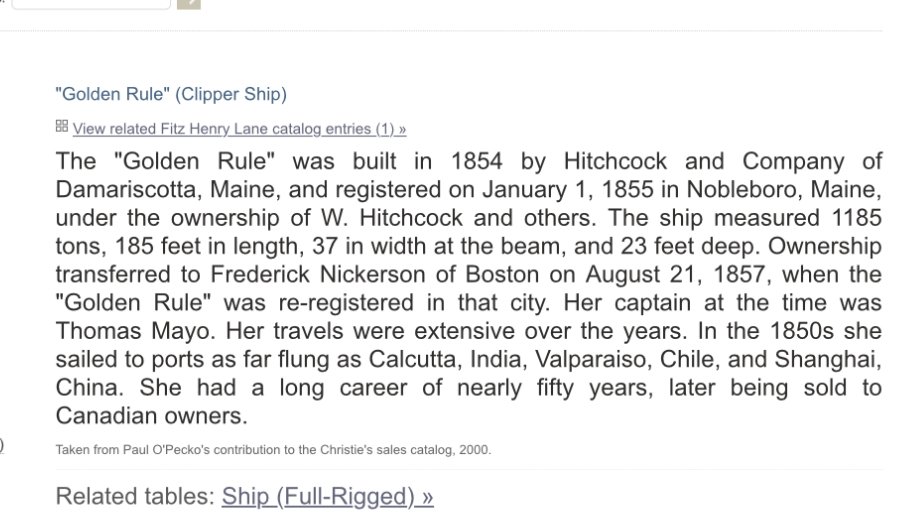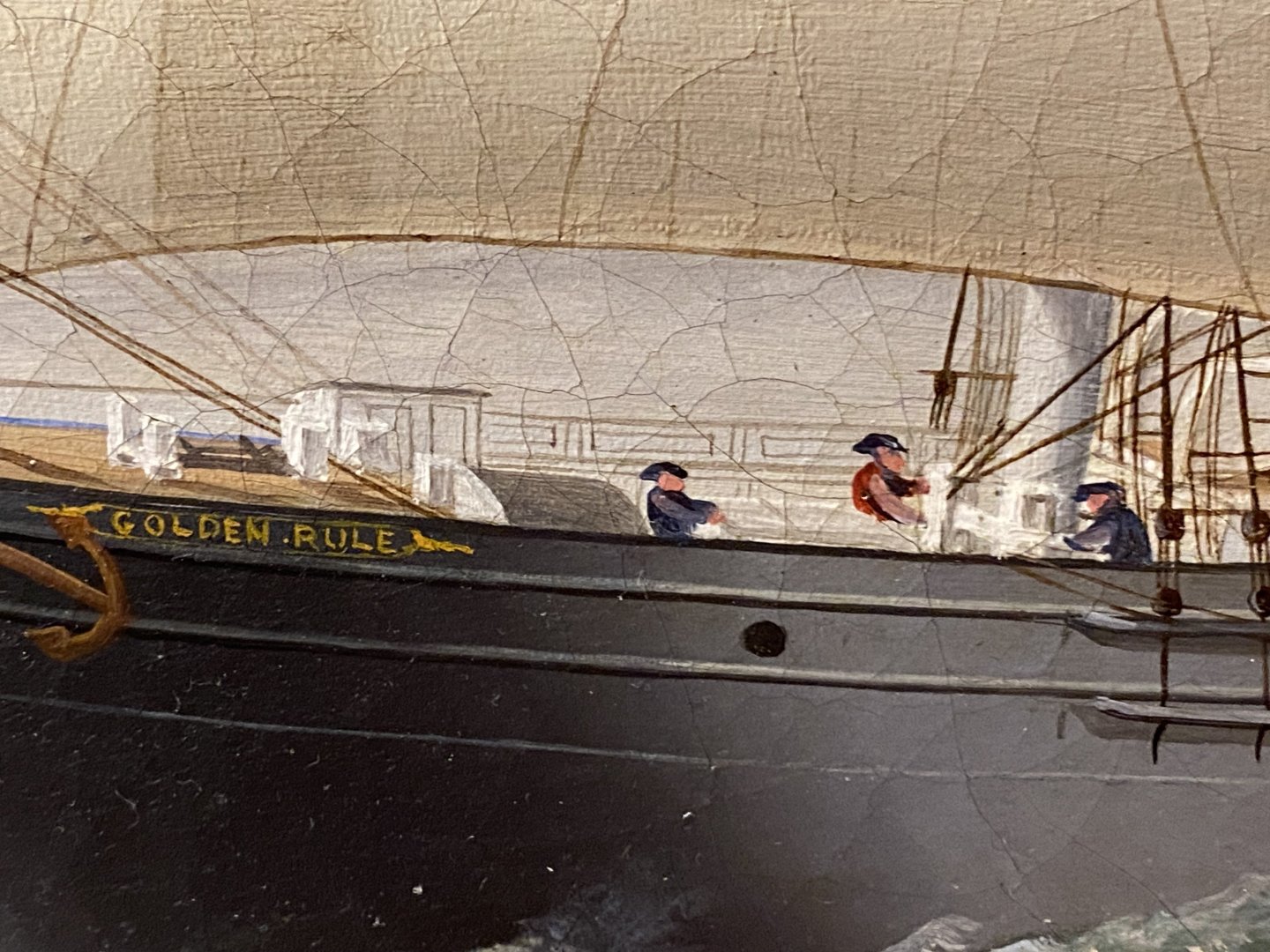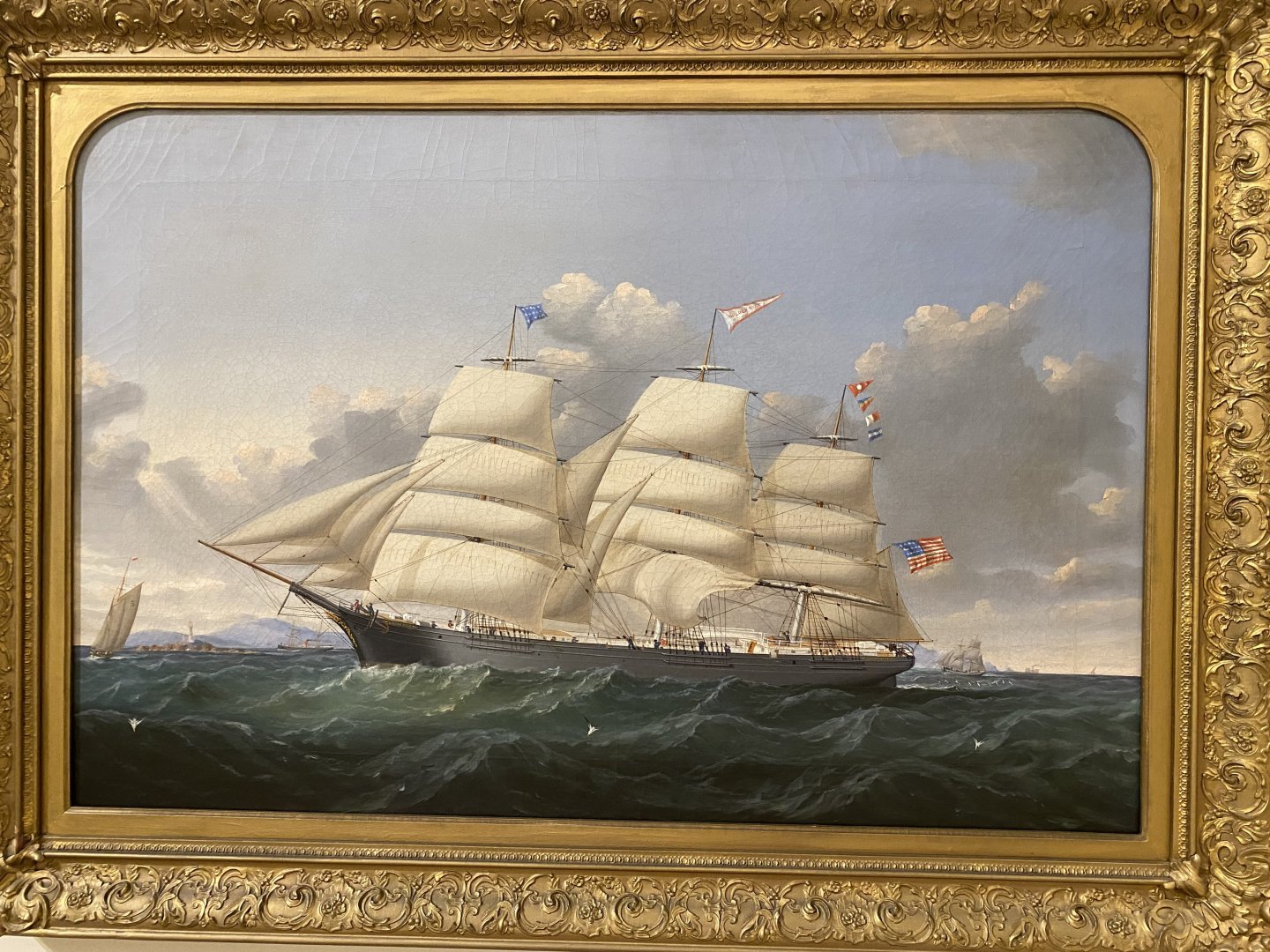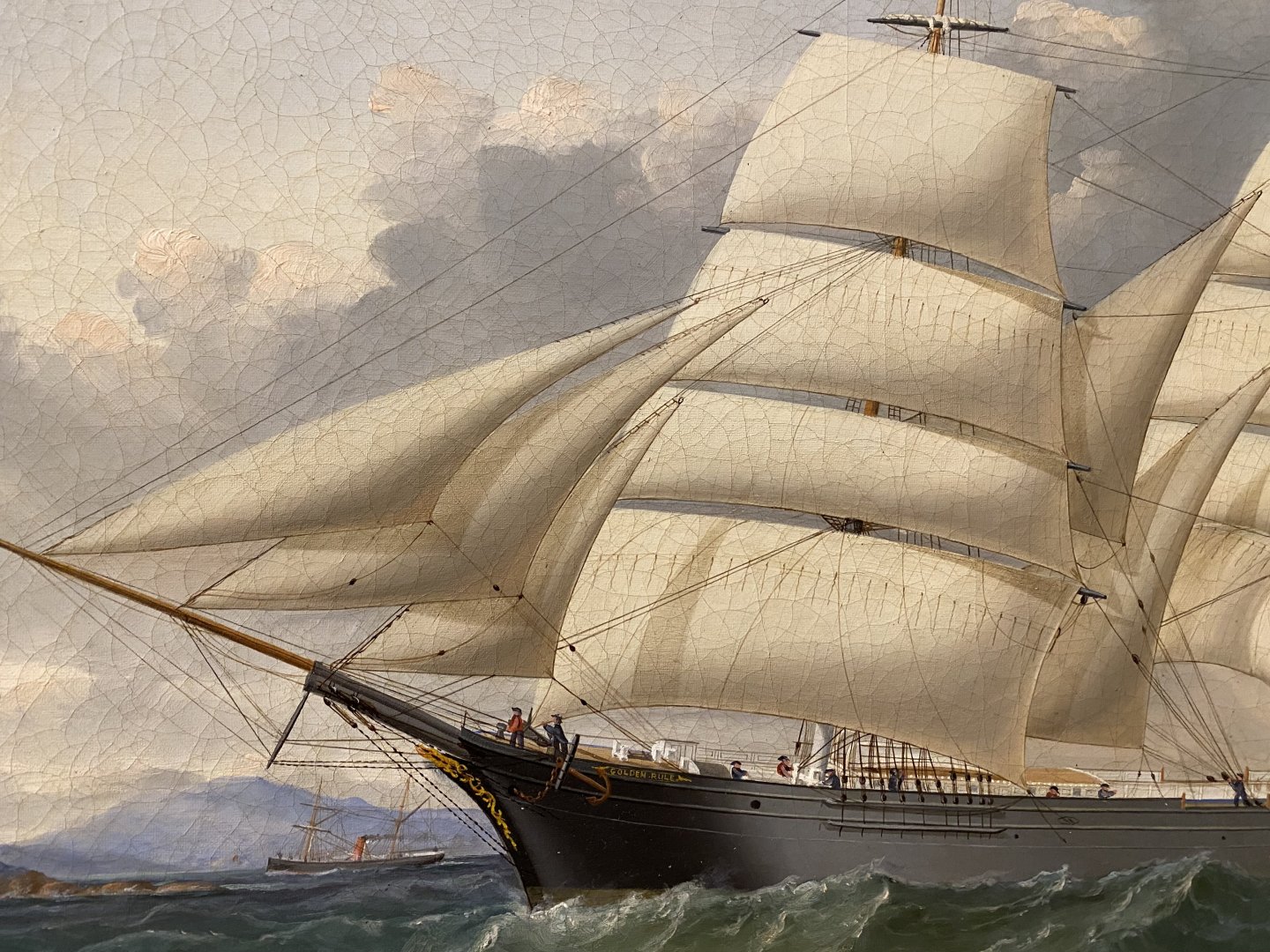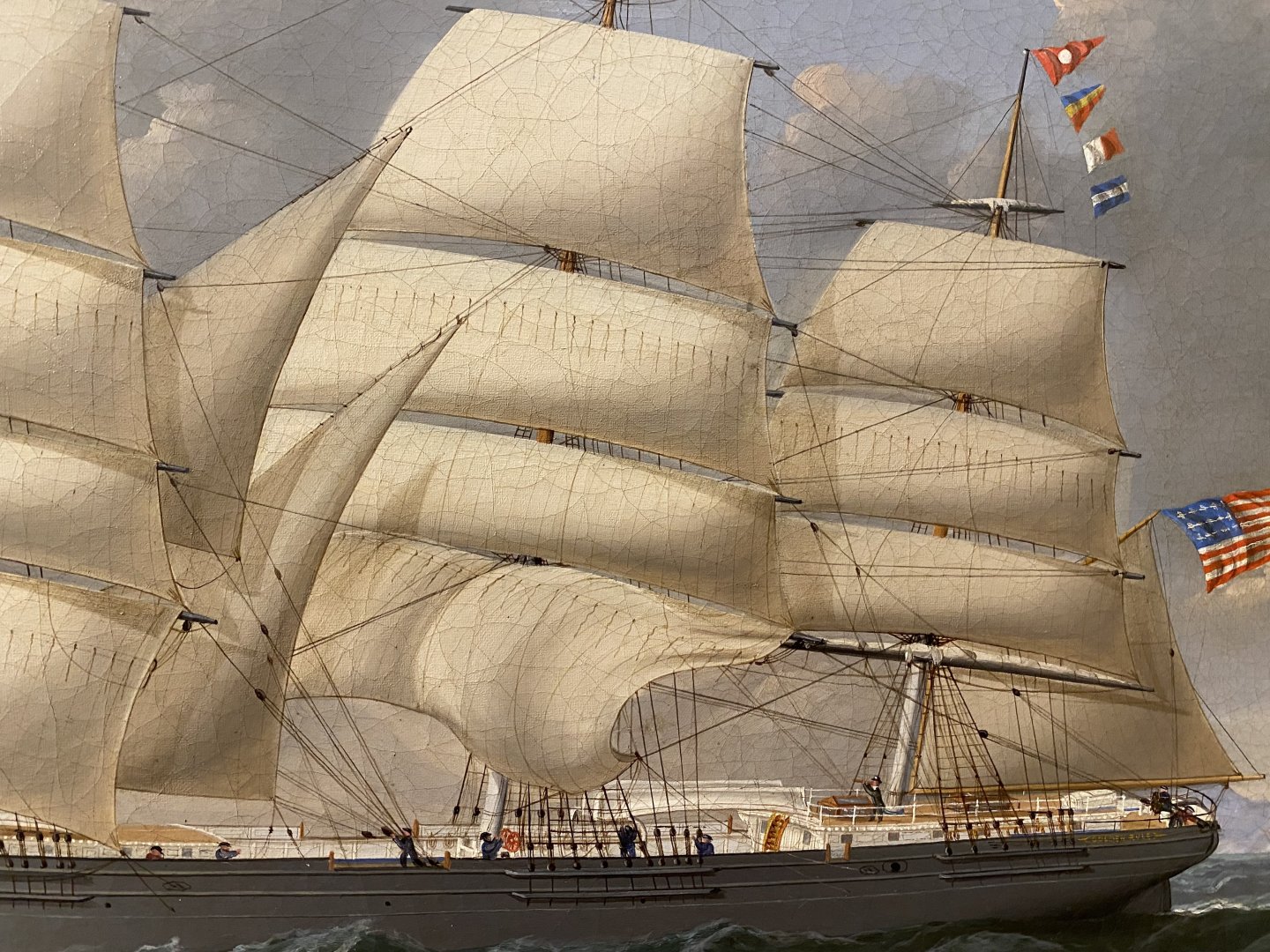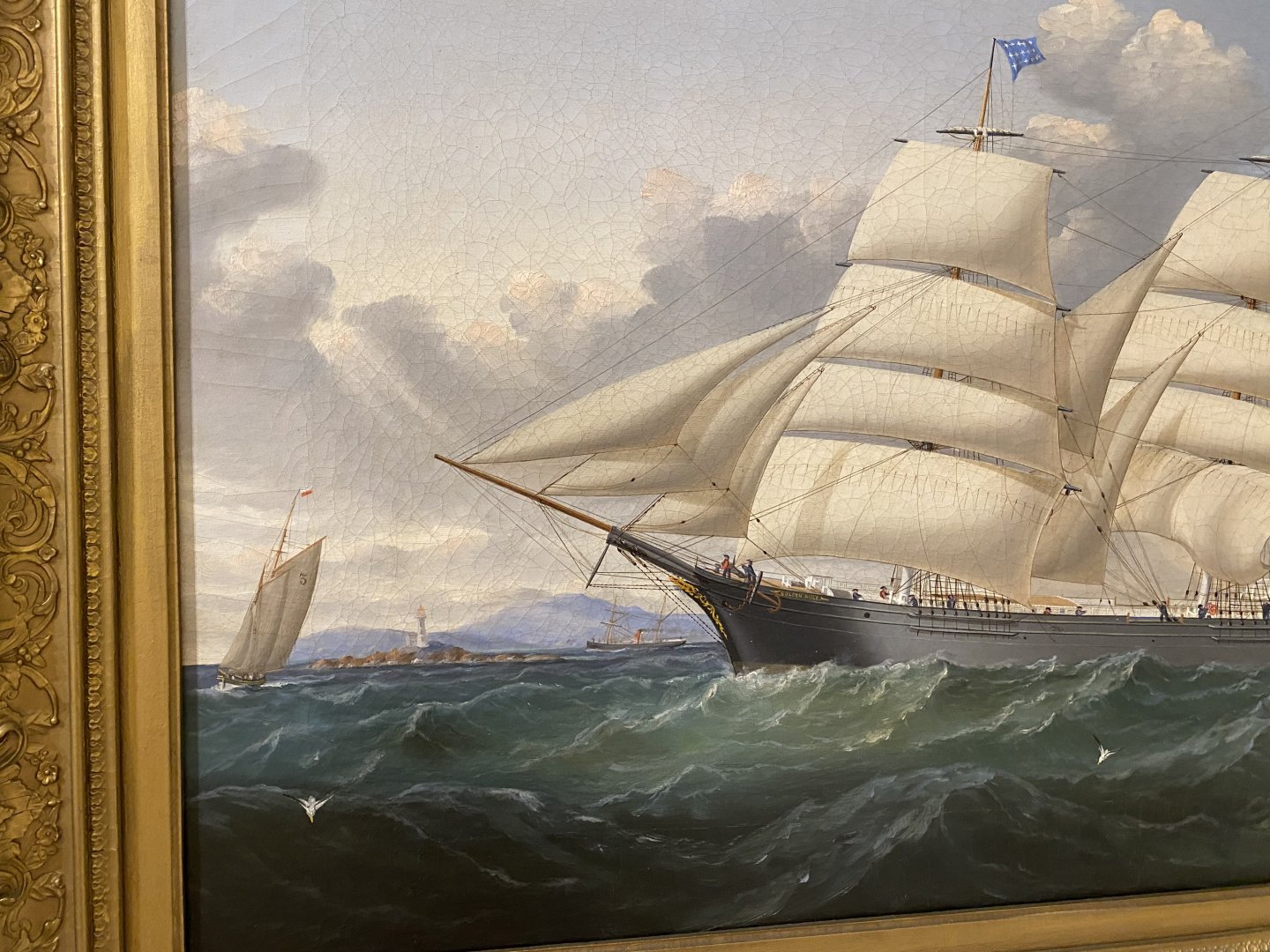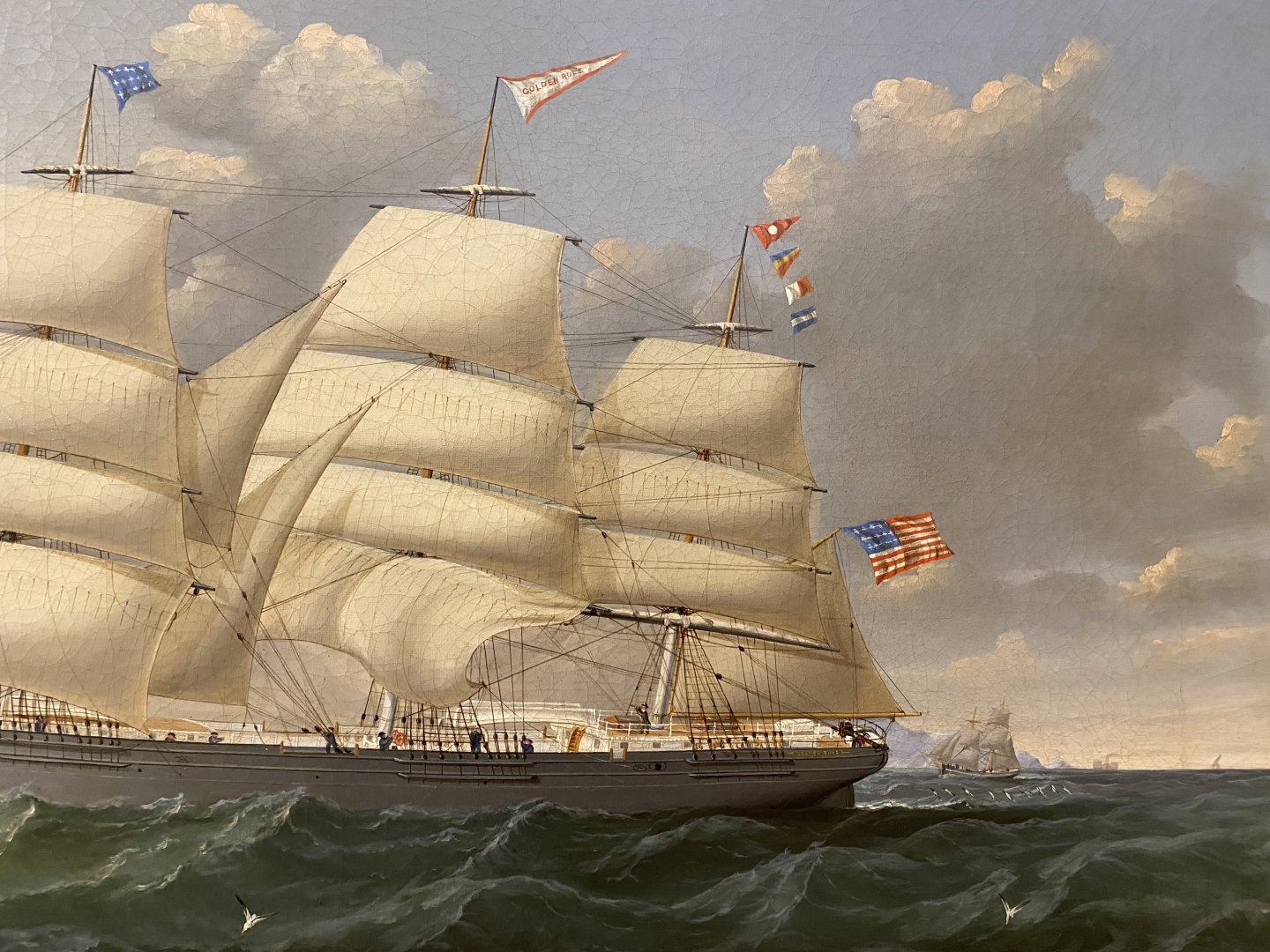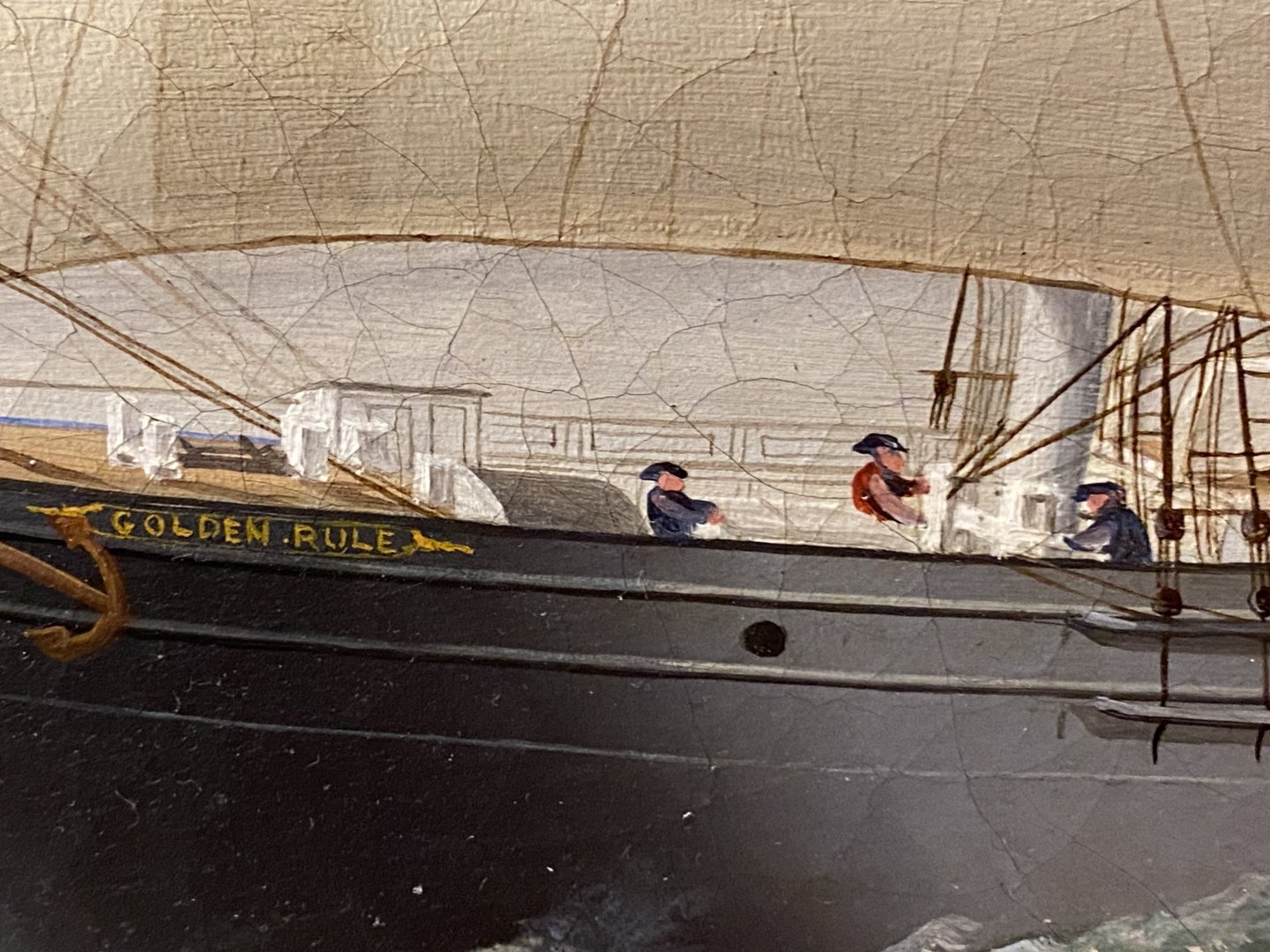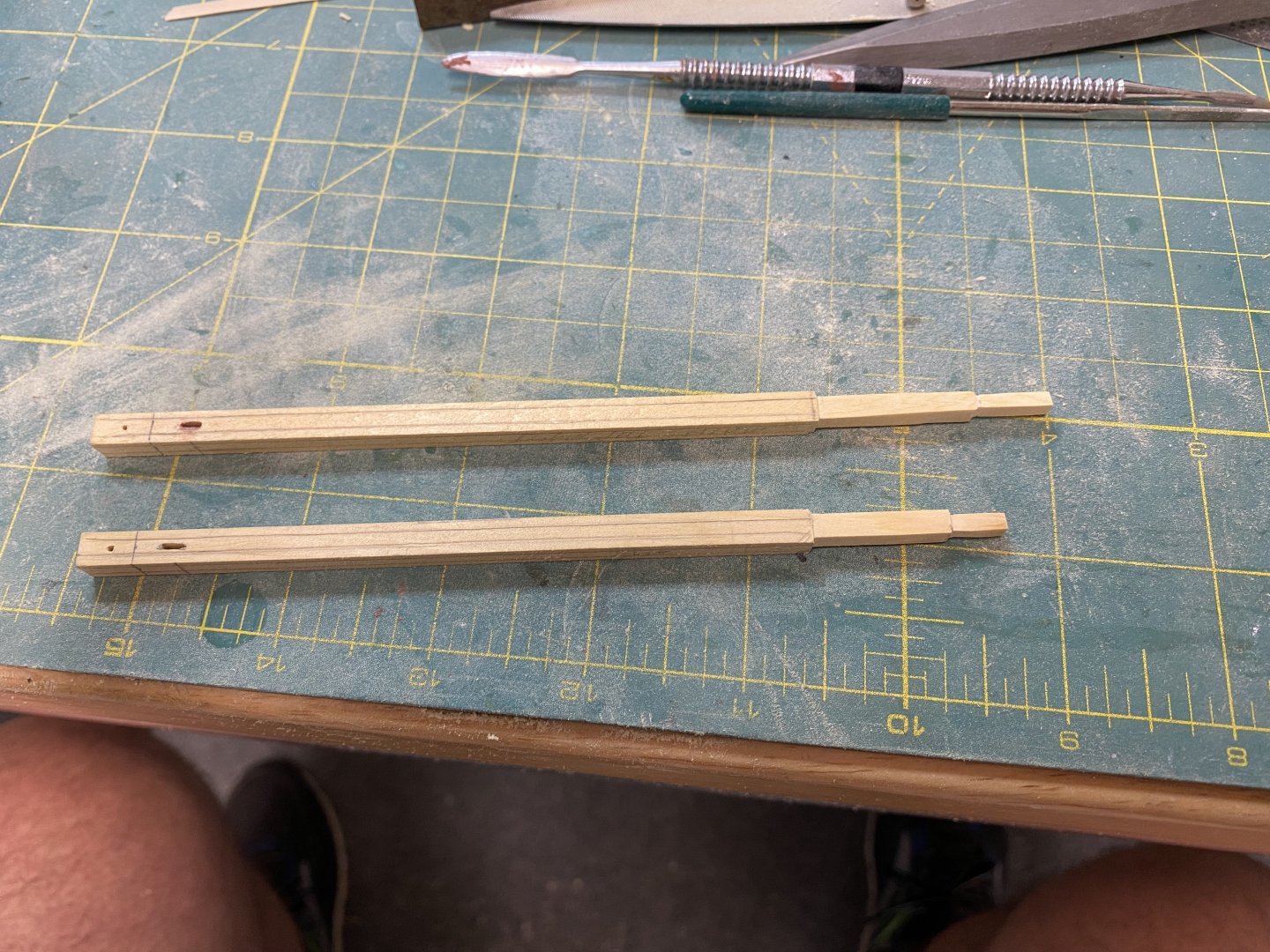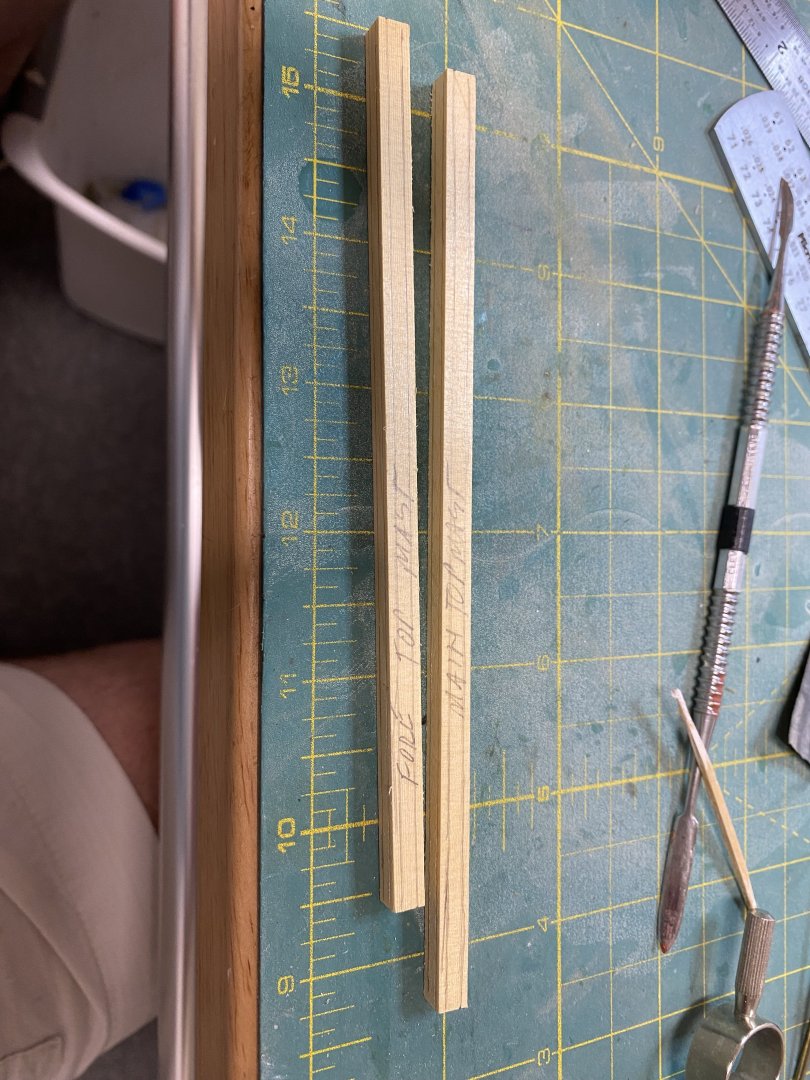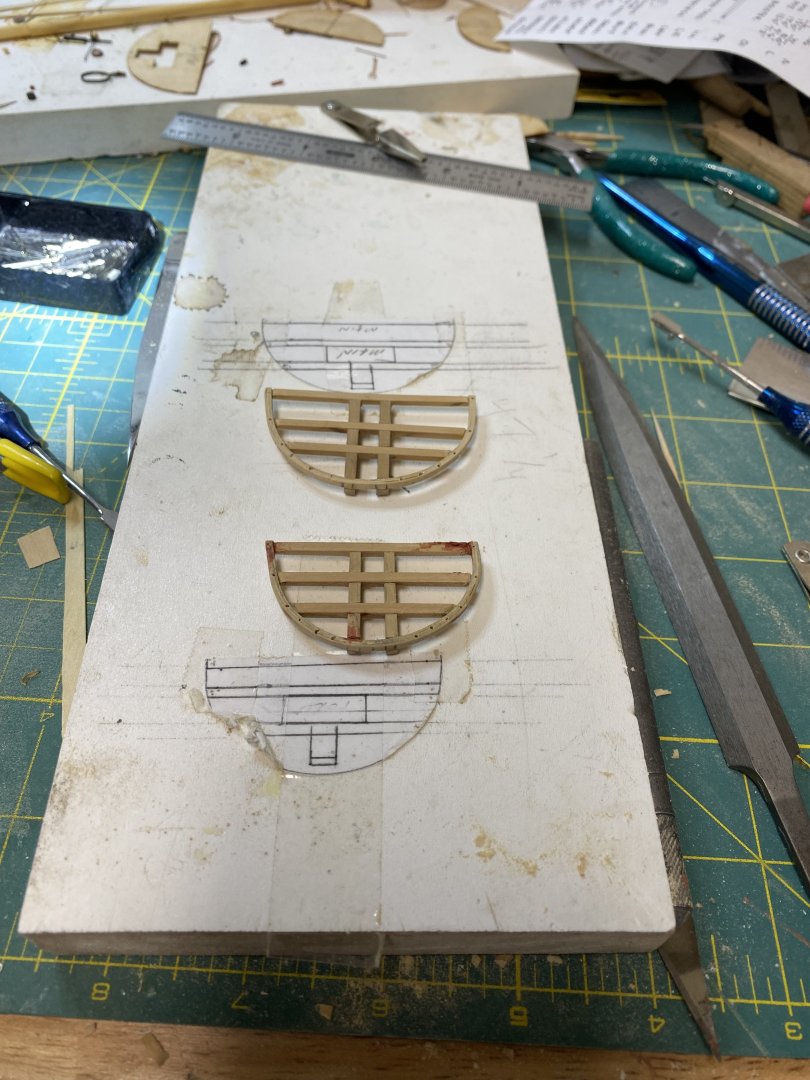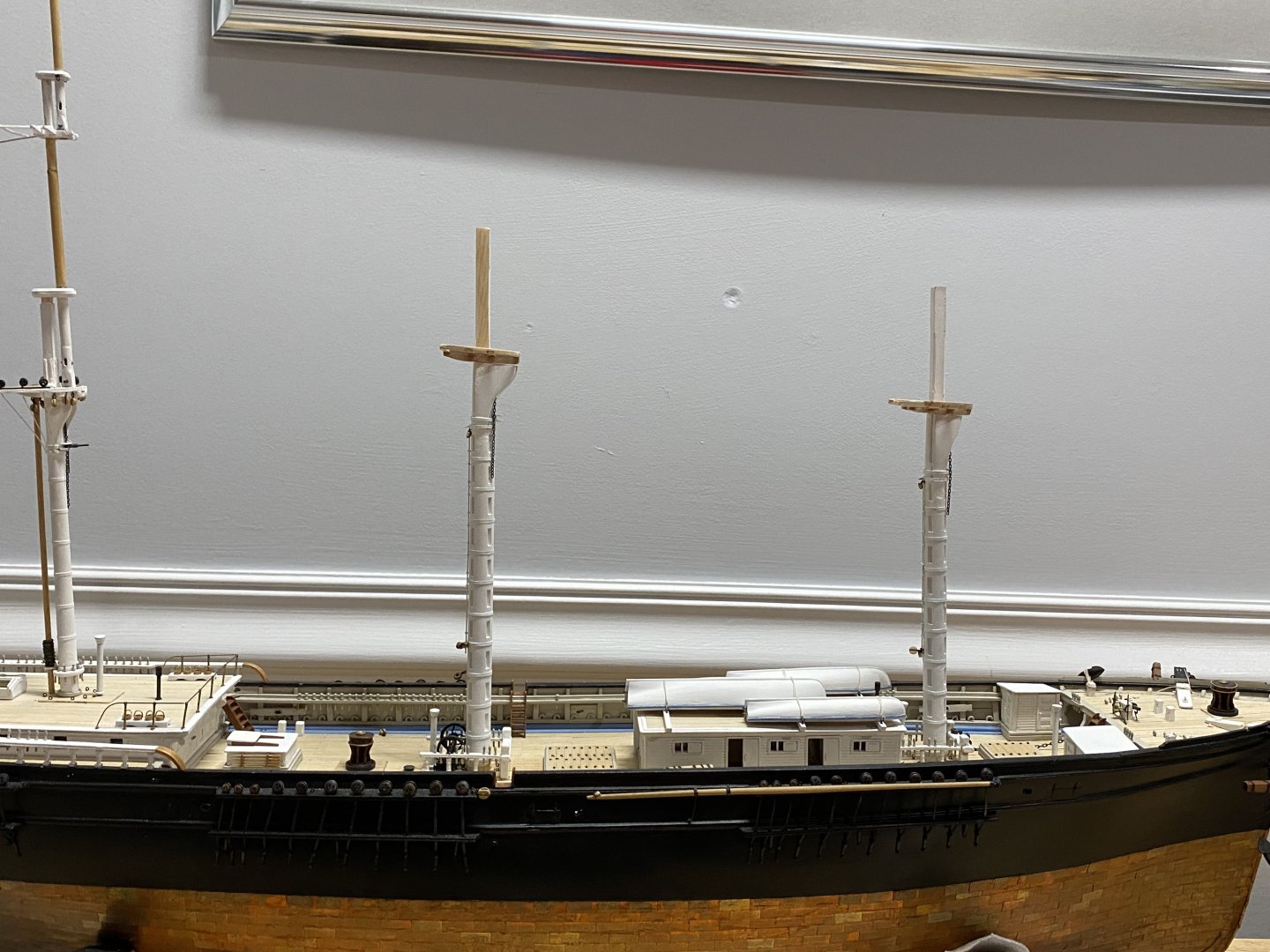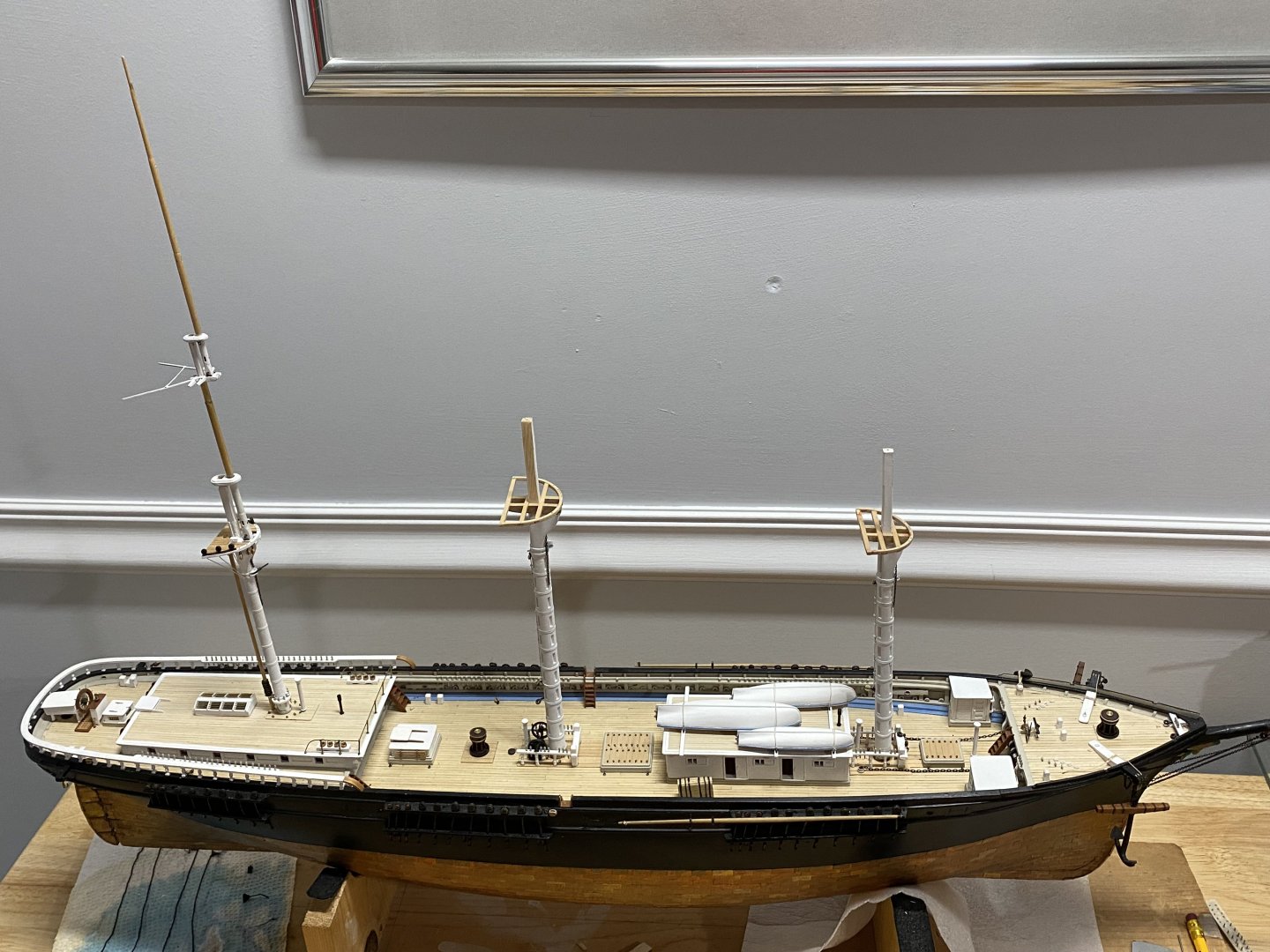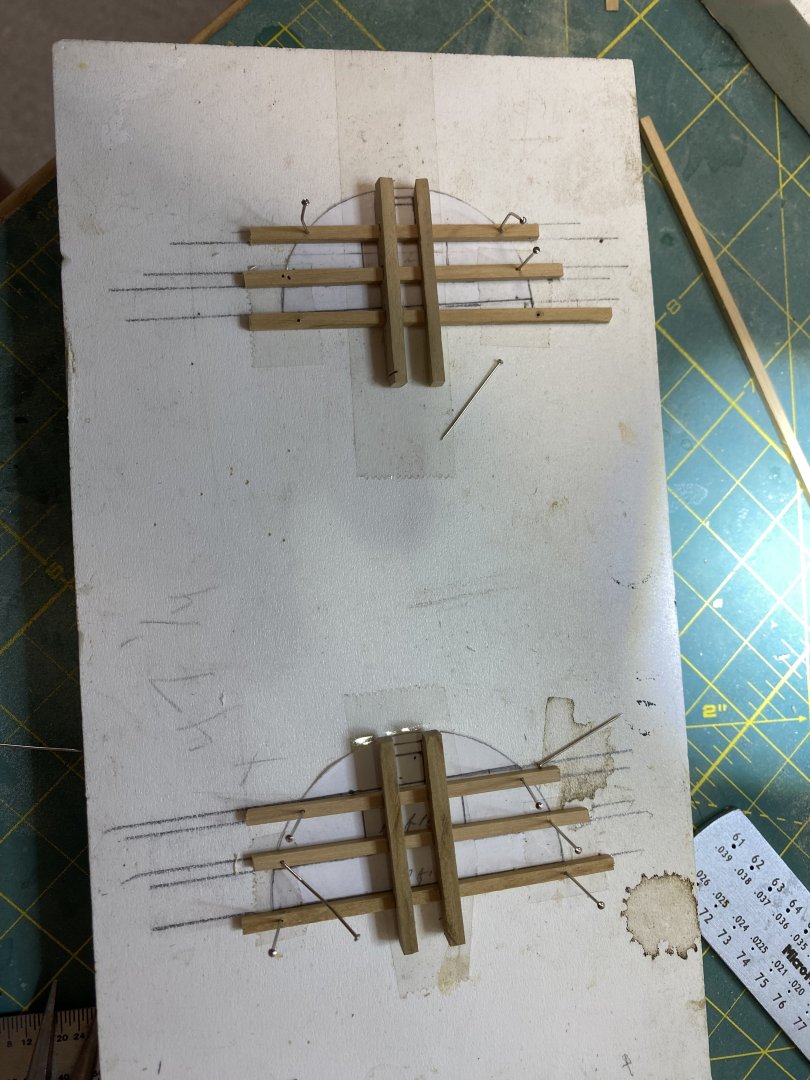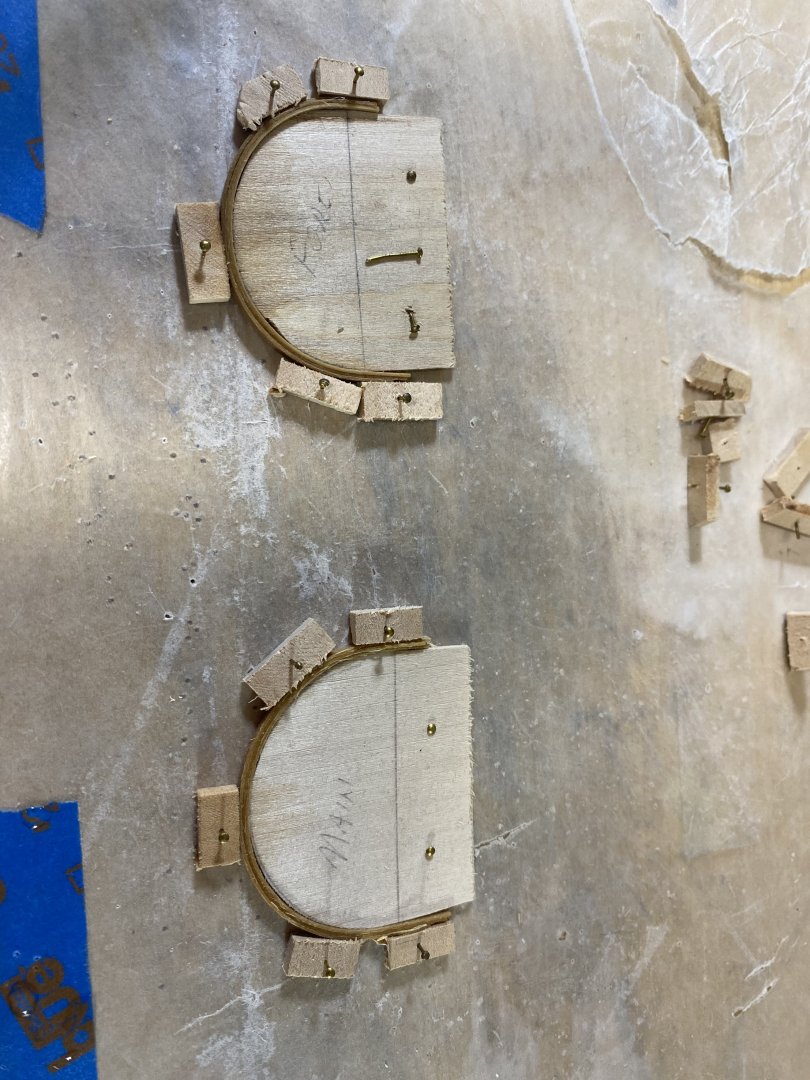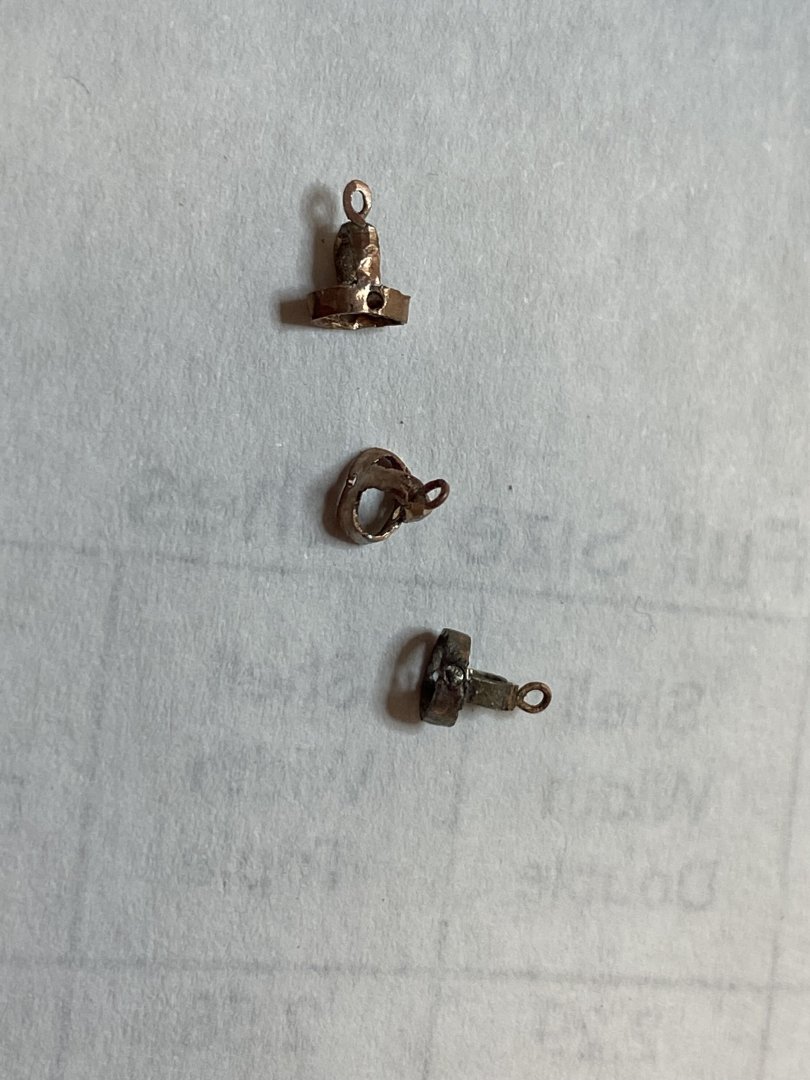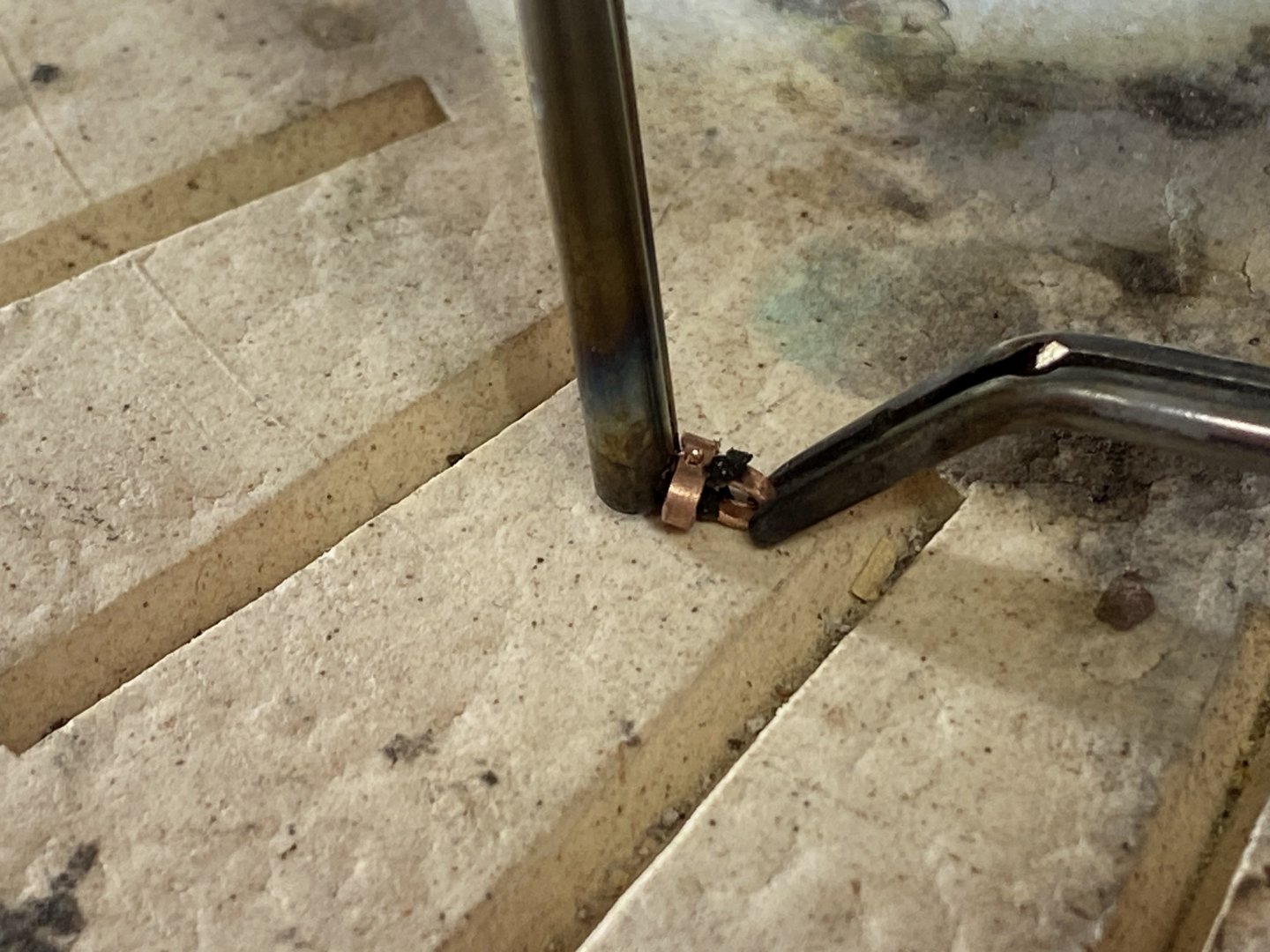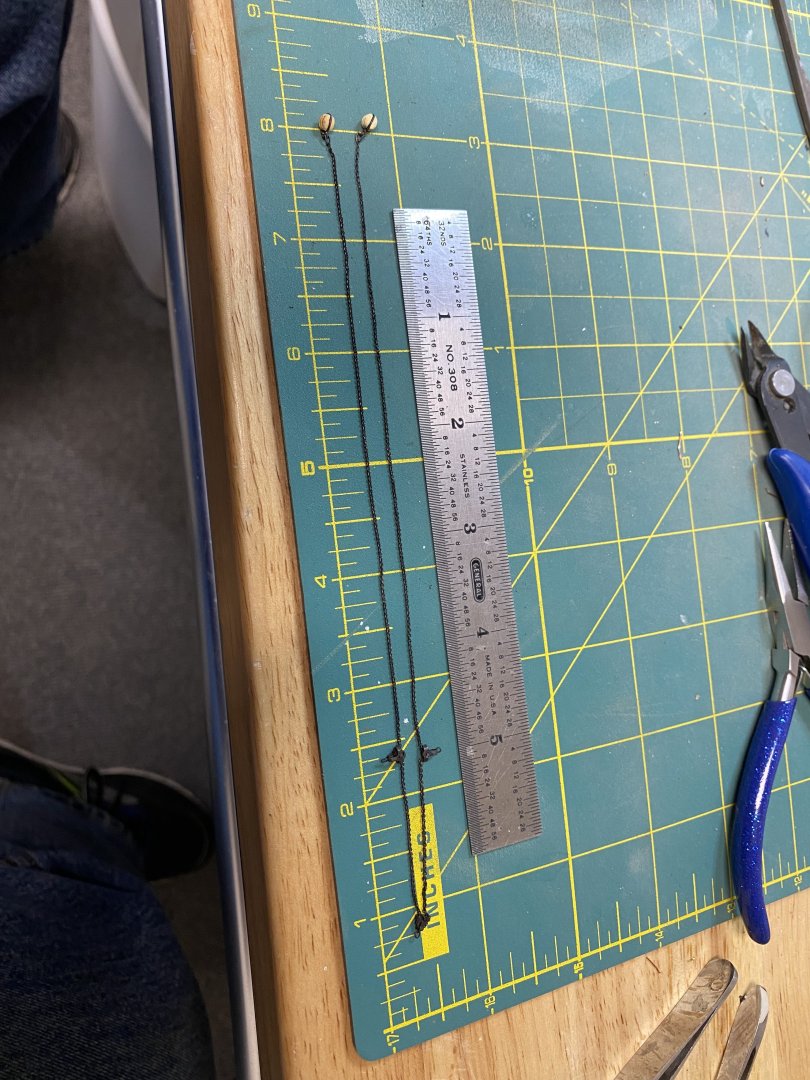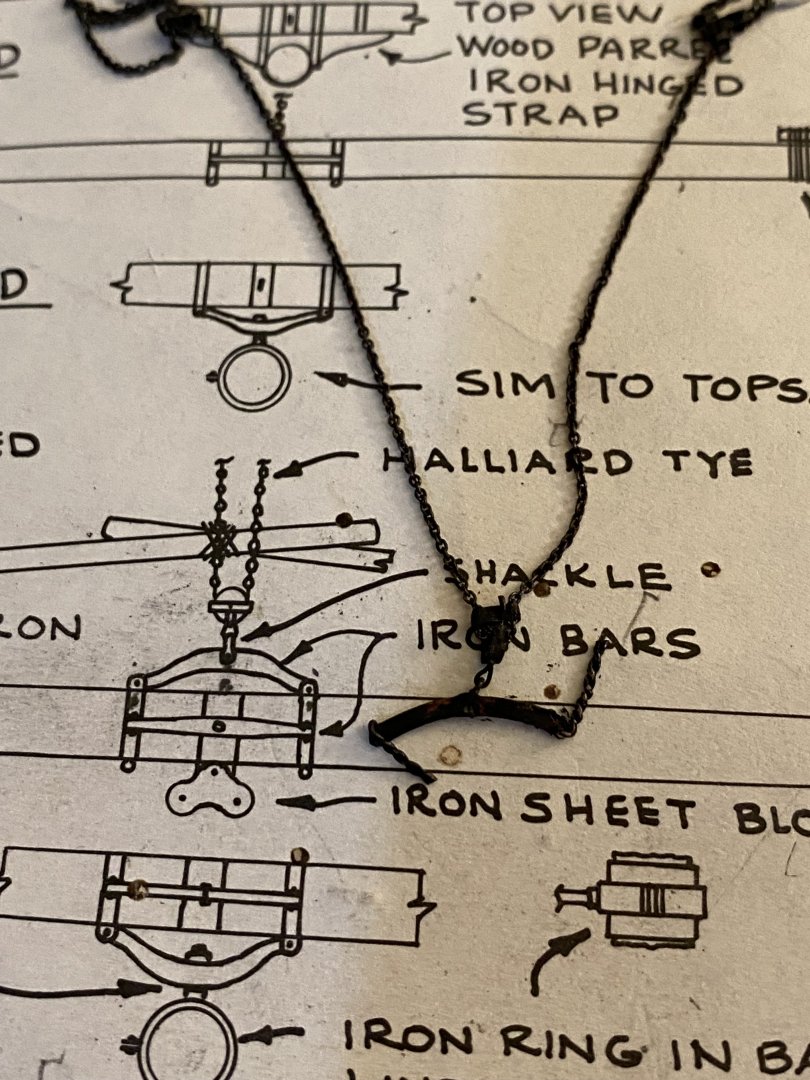
Rick310
NRG Member-
Posts
785 -
Joined
-
Last visited
Content Type
Profiles
Forums
Gallery
Events
Everything posted by Rick310
-
Rich, The captain of the Flying Fish was Edward Nockels until she was wrecked leaving Foochow. She was subsequently repaired/rebuilt at whampoa(?), sold to Manila firm and lost in the South China Sea. Thwre is another shi, a brig? Also named the Flying Fish. This rail probably came from this other ship. Rick
- 345 replies
-
- Flying Fish
- Model Shipways
-
(and 1 more)
Tagged with:
-
Rich, there is a beautiful painting of the Golden Rule by Fitz Hugh Lane. This is the info I could find on the Golden Rule. Rick
- 345 replies
-
- Flying Fish
- Model Shipways
-
(and 1 more)
Tagged with:
-
Rich, the Golden Rule was built in Newcastle - Damariscotta, Maine, by Col. Hitchcock in 1854. The painting is attributed to Charles Ogily, a Liverpool artist, known for his paintings of pilot boats.
- 345 replies
-
- Flying Fish
- Model Shipways
-
(and 1 more)
Tagged with:
-
Rob, ClipperFan, Jared, Thank you for your kind words! Still trying to get over the jet lag and get caught up with the yard work ect. The water closet is in front of the companionway entry on the FF plans, both contained in one structure. Water closets on either side of the forecastle seems to be a common place to locate them per Cutty Sark and other contemporary paintings.( see photo of painting of the clipper ship Golden Rule). Ben Langford chose to make the water closet larger with the companionway steps leading below on the aft side . This seems to meet the description by Duncan Mc Lean although it is all conjecture. Interestingly, the Buttersworth painting shows no evidence of them. Omitted or hidden by the rail? Or a forecastle similar to your beautiful design? The anchor windlass you have for Stag Hound seems to me to be a latter and more modern version. Do you have any information when this specific design was produced? ClipperFan, the larger lubber hole on a he CS was all metal, this would be stronger than wood. I don’t see how you could cut the middle cross tree and retain the strength on just 2 full length cross trees. Clipperfan and Rob, thanks for your input. I would love to be able to talk to Donald McKay and see if this model and the plans are accurate to the actual vessel. Both of you have brought up interesting points and another way to interpret the written description! Keep up the great work! Rick Rob, I knew you had a long career in Dentistry, which helps to explain your remarkable modeling skills! Rick
- 345 replies
-
- Flying Fish
- Model Shipways
-
(and 1 more)
Tagged with:
-
Jared, nice recovery on repairing your mast. I too had to repair the top of my mizzen mast , which I snapped off while drilling the holes for the skysail halyard. This seems to be a common theme among us model ship builders! I can only imagine what’s going to happen with the spanker boom and jib boom! I’m already thinking about affixing some kind of a guard for both booms, otherwise it is a certainty that I will snap them off as well!! You continue to do a great job and you are progressing nicely! Rick
- 431 replies
-
- Flying Fish
- Model Shipways
-
(and 2 more)
Tagged with:
-
Well, September was quite a month. Finally retired after 40 years as an Endodontist (root canal specialist) and 45 years as a dentist! The admiral and I celebrated by taking a Viking Meditation cruise in between clearing out the office and preparing for our daughter’s wedding in 2 weeks. I was able to get a little time in the shop, and finished the trestle trees and cross trees with the curved rims for both the main and fore masts. These were made same as for the mizzen in an earlier post per EdT, modified for my convenience. They still need to be painted, planked and fitted out. Both the main and fore topmast were also made prior to the cross trees to insure an accurate fit and proper spacing. Note that none of the mast are permanent installed yet. My intent is to shim them and not glue them in place to make it easier should repairs ever need to be made.
- 345 replies
-
- Flying Fish
- Model Shipways
-
(and 1 more)
Tagged with:
-
I’ve scratch built probably 98% of my Flying Fish. Takes much longer, but a great way to develop modeling skills and you will be much happier with the results, even if not perfect! There is just something about a scratch built model that stands out! Rick
- 186 replies
-
- Flying Cloud
- Mamoli
-
(and 1 more)
Tagged with:
-
Rob, Yes, I am following the plans. I know of no other source for the double topsail halyard tyes. The model of the clipper ship Challenge, at the Smithsonian has chain topsail halyards that appear to be the same as on the FF, although it is difficult to see where they route under the cross trees. I would think that Staghound was similarly equipped, given that it was larger than the FF. Some very impressive people worked on the FF plans, so they are my default if no or better information is available. As you know, I have deviated from the plans when I felt it was appropriate, such as the aft cabin, color scheme and other minor details. You and ClipperFan are doing a marvelous job recreating Staghound. Rick
- 345 replies
-
- Flying Fish
- Model Shipways
-
(and 1 more)
Tagged with:
-
Jared, What a difference it makes having the masts, lower shrouds and yards in place! Rick
- 431 replies
-
- Flying Fish
- Model Shipways
-
(and 2 more)
Tagged with:
About us
Modelshipworld - Advancing Ship Modeling through Research
SSL Secured
Your security is important for us so this Website is SSL-Secured
NRG Mailing Address
Nautical Research Guild
237 South Lincoln Street
Westmont IL, 60559-1917
Model Ship World ® and the MSW logo are Registered Trademarks, and belong to the Nautical Research Guild (United States Patent and Trademark Office: No. 6,929,264 & No. 6,929,274, registered Dec. 20, 2022)
Helpful Links
About the NRG
If you enjoy building ship models that are historically accurate as well as beautiful, then The Nautical Research Guild (NRG) is just right for you.
The Guild is a non-profit educational organization whose mission is to “Advance Ship Modeling Through Research”. We provide support to our members in their efforts to raise the quality of their model ships.
The Nautical Research Guild has published our world-renowned quarterly magazine, The Nautical Research Journal, since 1955. The pages of the Journal are full of articles by accomplished ship modelers who show you how they create those exquisite details on their models, and by maritime historians who show you the correct details to build. The Journal is available in both print and digital editions. Go to the NRG web site (www.thenrg.org) to download a complimentary digital copy of the Journal. The NRG also publishes plan sets, books and compilations of back issues of the Journal and the former Ships in Scale and Model Ship Builder magazines.

